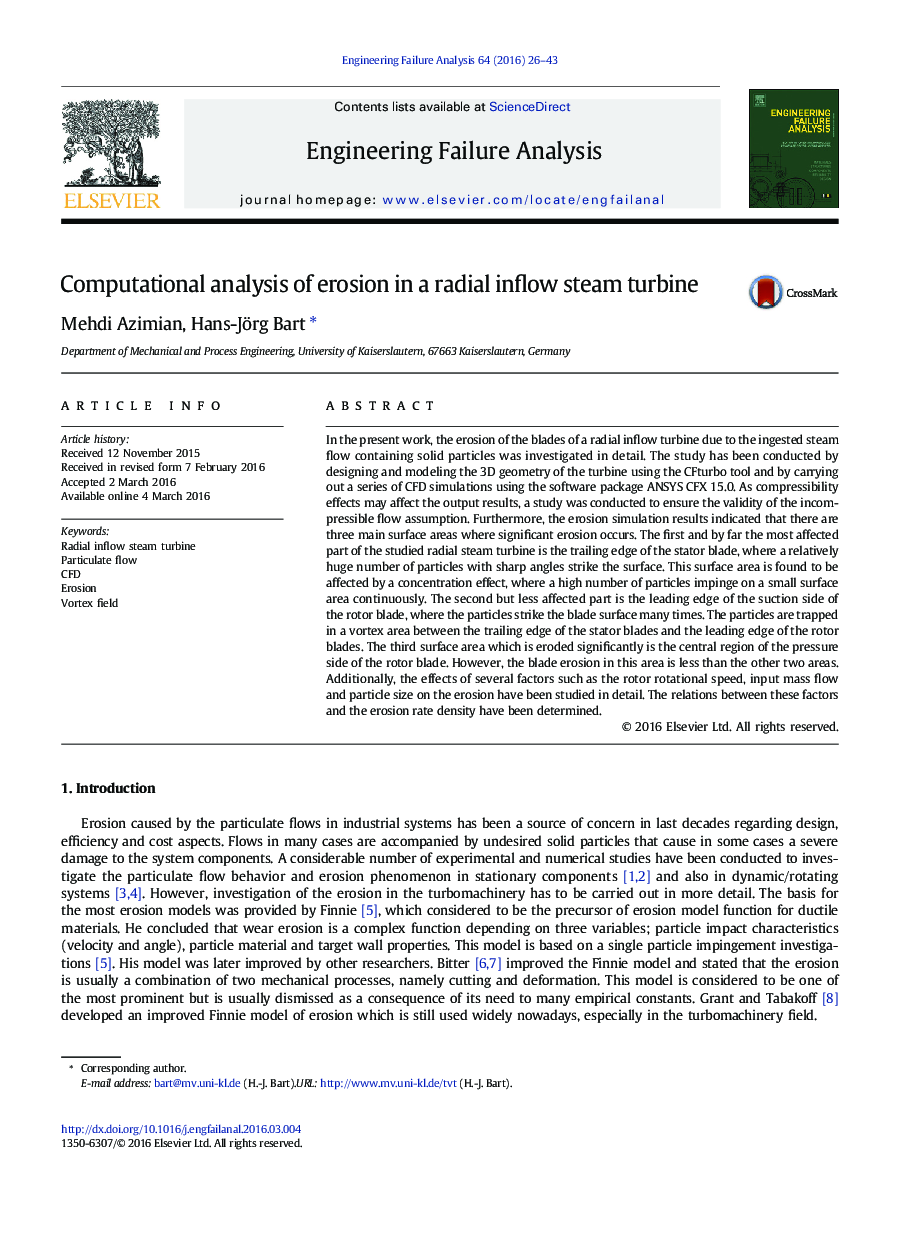| Article ID | Journal | Published Year | Pages | File Type |
|---|---|---|---|---|
| 763295 | Engineering Failure Analysis | 2016 | 18 Pages |
•A detailed review of the recent investigations on erosion in steam turbines was presented.•CFturbo tool was applied to design and model the 3D geometry of the turbine parts.•CFD simulation results indicate that there are 3 main surface areas where significant erosion occurs.•The trapped particles in the vortex area between stator and rotor strike the surface multiple times.•Effects of impact parameters on the particle streamlines and erosion rates were studied in detail.
In the present work, the erosion of the blades of a radial inflow turbine due to the ingested steam flow containing solid particles was investigated in detail. The study has been conducted by designing and modeling the 3D geometry of the turbine using the CFturbo tool and by carrying out a series of CFD simulations using the software package ANSYS CFX 15.0. As compressibility effects may affect the output results, a study was conducted to ensure the validity of the incompressible flow assumption. Furthermore, the erosion simulation results indicated that there are three main surface areas where significant erosion occurs. The first and by far the most affected part of the studied radial steam turbine is the trailing edge of the stator blade, where a relatively huge number of particles with sharp angles strike the surface. This surface area is found to be affected by a concentration effect, where a high number of particles impinge on a small surface area continuously. The second but less affected part is the leading edge of the suction side of the rotor blade, where the particles strike the blade surface many times. The particles are trapped in a vortex area between the trailing edge of the stator blades and the leading edge of the rotor blades. The third surface area which is eroded significantly is the central region of the pressure side of the rotor blade. However, the blade erosion in this area is less than the other two areas. Additionally, the effects of several factors such as the rotor rotational speed, input mass flow and particle size on the erosion have been studied in detail. The relations between these factors and the erosion rate density have been determined.
Graphical abstractTracking of one single particle with the rotor rotational velocity of 10,000 rpm.Figure optionsDownload full-size imageDownload as PowerPoint slide
